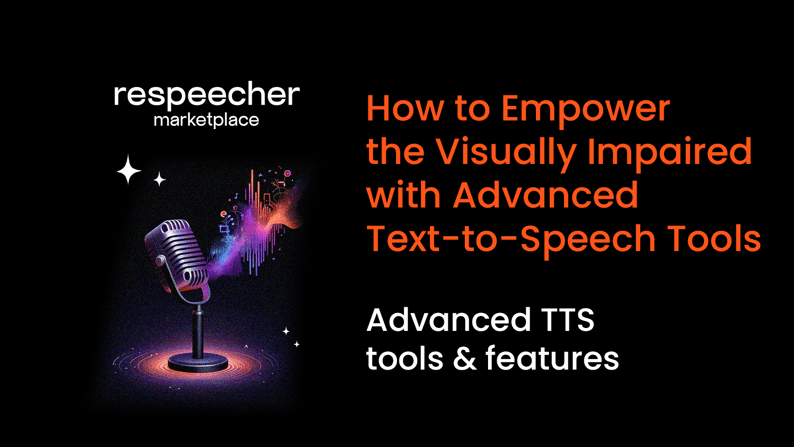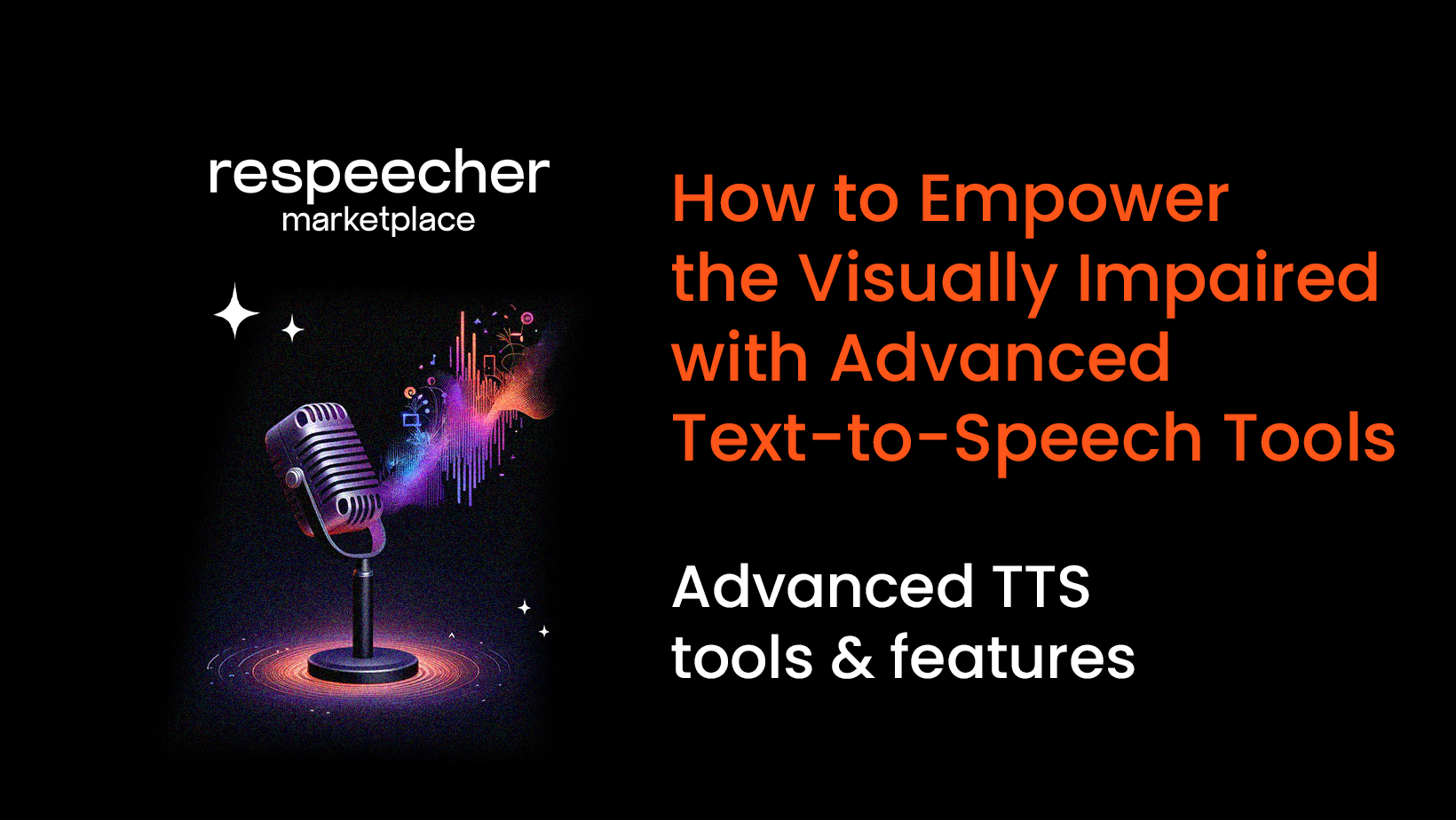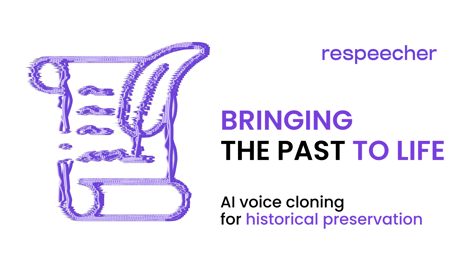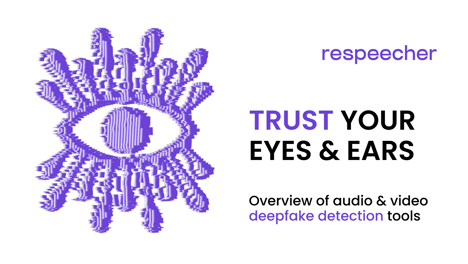How to Empower the Visually Impaired with Advanced Text-to-Speech Tools

Accessibility features are pivotal in ensuring equal participation and opportunities in various facets of life for people in need for visual impairment support. Accessibility in technology extends beyond convenience. It embodies a fundamental principle of inclusivity and equity. It is about providing everyone, regardless of physical abilities, with the tools and opportunities to thrive in today's interconnected world.
Text-to-speech tools convert written text into spoken language, allowing individuals to listen to content rather than relying solely on visual cues. This innovation, as well as voice AI, has not only broken down barriers but has also opened up a world of possibilities for those with visual impairments.
Challenges and Solutions
Visually impaired individuals face many challenges when accessing and utilizing Text-to-Speech tools. Usability issues often arise due to the complexity of TTS interfaces or compatibility issues with various devices and software. Moreover, the digital divide exacerbates these challenges, as not all visually impaired individuals have equal access to TTS technology or the resources to acquire it.
To address these challenges, concerted efforts are needed to enhance the usability and accessibility of TTS for the visually impaired. This includes designing user-friendly interfaces, ensuring compatibility across different platforms and devices, and providing user training and support.
Text to speech technology operates through a series of intricate steps, each playing a crucial role in converting written text into spoken words. It all starts with text analysis, where the written text is meticulously broken down into smaller units, such as words or sentences. Then comes linguistic processing, which determines pronunciation, intonation, and emphasis. Finally, speech synthesis takes the stage, generating the audio output that closely mimics human speech patterns, thus creating a natural-sounding speech. This detailed process is what makes TTS technology so effective and transformative for visually impaired individuals.
Text-to-speech software is a game-changer for visually impaired individuals, eliminating barriers to accessing written content. By converting text into speech, TTS tools empower users to listen to digital content in a format that is both accessible and understandable. This eases communication and information access and fosters independence and autonomy for visually impaired individuals, a significant stride towards a more inclusive society.
TTS technology provides autonomy and accessibility for visually impaired individuals by enabling them to engage with digital content independently. It enhances the inclusivity of digital content by making it accessible to a broader audience. By incorporating text-to-speech tools into their daily routines, visually impaired individuals can navigate the digital world with greater ease and confidence, ultimately fostering independence and inclusivity in all aspects of their lives.
Advanced TTS tools and features
Advanced TTS technology has seen remarkable advancements in recent years, revolutionizing the accessibility technology and user experience for visually impaired individuals. These advancements transcend text-to-speech conversion, incorporating sophisticated features that mimic human speech patterns and emotions when using an AI voice generator.
One of the latest advancements in TTS technology is the integration of natural language processing algorithms. These algorithms analyze written text for context, semantics, and syntax, allowing text-to-speech engines to produce more accurate and natural-sounding speech. Another groundbreaking feature in modern TTS technology is emotional inflection. This capability enables TTS systems to convey emotions such as joy, sadness, or excitement through tone, pitch, and pacing variations.
Text to speech tools can create more engaging and immersive user experiences by adding emotional depth to synthesized speech, enhancing comprehension and engagement. Finally, advanced TTS tools now offer robust support for multiple languages and dialects.
On the edge of innovation, Respeecher Voice Marketplace offers highly realistic and natural-sounding AI voices for various applications. These voices are generated using state-of-the-art deep learning algorithms that analyze and synthesize speech patterns with unprecedented accuracy.
What sets Respeecher apart is its ability to incorporate natural breathing sounds, including inhales and exhales, into synthesized speech. This level of realism adds a human-like quality to the voices, making them indistinguishable from recordings of actual human speech. This lifelike quality enhances the listening experience for visually impaired individuals, making digital content more engaging and immersive.
Applications of TTS in everyday life
Text-to-speech technology has become indispensable in the everyday lives of visually impaired individuals, offering a wide range of applications that enhance accessibility, independence, and inclusion. Here are some key areas where TTS engines play a transformative role:
E-books and Digital Content
Text-to-speech tools enable visually impaired individuals to access a vast digital content library, including e-books, articles, and online publications. By converting written text into spoken words, TTS allows users to listen to books and articles on their preferred devices, such as smartphones, tablets, or dedicated e-book readers.
Navigation Apps
Navigation apps equipped with TTS capabilities provide invaluable assistance to visually impaired individuals when traveling or navigating unfamiliar environments. These apps offer turn-by-turn directions and real-time updates, guiding users with audio instructions and alerts.
Smart Home Devices
Text to speech integration in smart home devices enhances digital accessibility and convenience for visually impaired individuals in their homes. Voice-controlled assistants like Amazon Alexa, Google Assistant, and Apple Siri utilize TTS technology to respond to user commands and provide spoken feedback.
Educational Resources
TTS technology facilitates access to educational resources for visually impaired students and learners of all ages. Educational materials, such as textbooks, lectures, and study guides, can be converted into audio format using TTS tools, allowing users to listen to the content at their own pace.
Productivity Tools
Text-to-speech technology enhances productivity for visually impaired individuals by enabling access to email, documents, and other digital resources. Screen readers equipped with TTS capabilities convert on-screen text into speech, allowing users to navigate computer interfaces, read emails, and work with documents using audio feedback.
Real-world Impact and user stories
Voice Cloning for Laryngeal Cancer Patients: Respeecher utilizes voice cloning technology to assist laryngeal cancer patients, particularly those who have undergone larynx removal, regain their voice quality. By transforming electrolaryngeal and tracheoesophageal voice samples into clearer, more natural-sounding audio, the technology enhances patient communication. The deployable solution enables real-time voice AI replacement, facilitating easier interactions, especially in business and social settings.
Friedreich's Ataxia Patient Voice Restoration: Joseph Boon, diagnosed with Friedreich's Ataxia, collaborated with Respeecher to improve his quality of life. Despite the speech disorder's challenges, Joseph, along with his family, sought solutions. Using recordings from Joseph's time as a radio presenter, Respeecher created an AI model of his voice. The resulting voice model closely resembled Joseph's original voice, aiding him in vocal exercises and enhancing his speech.
Voice Cloning for Assistive Technology: Respeecher collaborates with individuals like Konrad Zieliński, a scientist who lost his voice due to laryngectomy, to advance voice AI cloning technology as an assistive tool. Konrad's voice samples were used to create a voice model, demonstrating how voice cloning facilitates natural communication for laryngectomy patients. The partnership showcases the potential for independent use of voice cloning technology in various audio and video applications.
Voice Restoration for Actor Michael York: Respeecher aids actor Michael York, who faced speech difficulties due to amyloidosis, a rare disease affecting his tongue's swelling. Despite health challenges, York's voice was restored using an AI model created by Respeecher, matching his original voice from past recordings. This collaboration exemplifies how voice AI cloning technology assists individuals in maintaining their vocal abilities, even in the face of degenerative conditions.
In each of these case studies, advanced text-to-speech tools have had a transformative impact on the lives of visually impaired individuals, empowering them to overcome barriers and achieve their goals in education, work, and personal enrichment.
Conclusion
For individuals with speech disorders, everyday communication can be a significant challenge, often leading to frustration, isolation, and limited opportunities for social interaction and professional advancement.
Respeecher's text-to-speech tools and voice AI cloning technologies revolutionize the field of assistive communication by enabling individuals with speech disorders to create personalized, natural-sounding voices that closely resemble their own. By leveraging deep learning algorithms and advanced speech synthesis techniques, Respeecher can clone a person's voice from a short recorded speech sample, preserving their unique vocal characteristics and nuances.
With Respeecher's voice cloning and TTS technology, individuals with speech disorders can reclaim their voices and communicate more effectively with others. Text to speech technology empowers individuals with speech disorders to participate fully in today's digital society. Visit the Respeecher Voice Marketplace today to find out more.

- voice cloning
- speech synthesis
- Laryngectomy
- Healthcare
- AI voice generator
- voice banking
- Assistive technology
- Respeecher Voice Marketplace
- voice ai
- text-to-speech tools
- TTS for the visually impaired
- speech disorders
- text-to-speech technology
- accessibility technology
- visual impairment support
- digital accessibility
- inclusive technology
- adaptive technology
- healthcare technology
- voice-changing technology
- neuromuscular diseases
- patient communication





